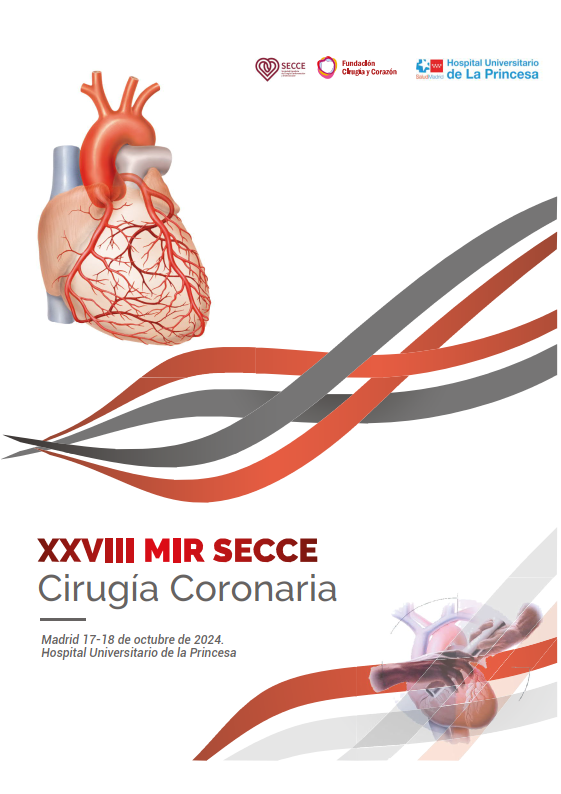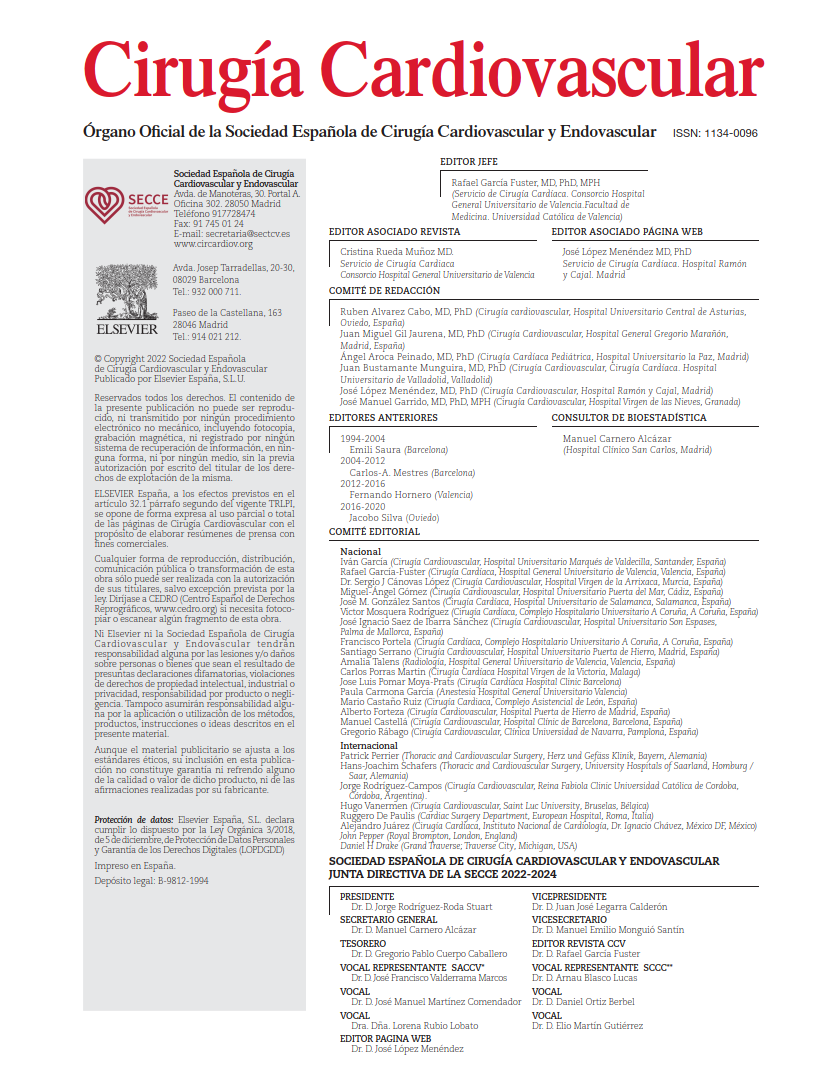Since its first publication in 2019, each annual update of the PARTNER 3 trial results for low surgical risk patients with severe symptomatic aortic stenosis has been eagerly awaited as one of the hot topics within the cardio-surgical community. In 2025, the six-year update is expected, which will likely be published in a high-impact journal or presented at upcoming continental cardiology society meetings.
In the meantime, an analysis of the echocardiographic data collected over five years has drawn particular interest, as it represents the first publication to break down the hemodynamic behavior of both prostheses in such depth—something that previous reports did not address in detail. According to the trial protocol, among the 1000 patients randomized between 2016 and 2017, echocardiographic data were collected by independent core laboratories at discharge, at 30 days post-implant, and annually thereafter, as stipulated in the study design.
The sheer volume of data provided by this report is extensive, and we will attempt to systematize it to enable an appropriate critical commentary, with a focus on the five-year outcomes. While still limited for a patient profile with long life expectancy, this follow-up can yield relevant insights into durability and device performance—key issues for symptomatic patients at low surgical risk. These data must be correlated with the clinical results, whose annual updates we hope will continue uninterrupted, given that after five years, noninferiority in the composite endpoint has persisted (with a nonsignificant cross-over in all-cause mortality curves favoring surgery).
We now summarize the echocardiographic findings to critically analyze them in the following sections:
- Prosthesis hemodynamic performance: peak transvalvular velocities and mean and peak gradients favored surgical prostheses (five-year results: 11.7 vs. 12.8 mmHg; 21.4 vs. 23.5 mmHg for surgical vs. TAVR, respectively). These figures were consistently reported in successive clinical outcome publications, showing a similar calculated valve area for both prosthesis types at 1.8 cm². Stroke volume across the prostheses was higher for surgery, both in absolute terms and when indexed to body surface area. In fact, the proportion of patients below the critical stroke volume threshold (<35 cc/m² or 32 cc/m² for women / 40 cc/m² for men—indicating heart failure with preserved ejection fraction) was significantly lower for surgery. This translated into a greater, though statistically nonsignificant but clinically relevant, reduction in left ventricular mass, again favoring surgery, with both groups maintaining preserved left ventricular ejection fraction (63.1% vs. 62.2%).
- Patient–prosthesis mismatch: Despite better intrinsic performance, surgical bioprostheses showed slightly higher rates of patient–prosthesis mismatch compared to TAVR, without statistical significance (moderate mismatch 26.9% vs. 22.5%; severe mismatch 5.8% vs. 5%; p = .088). This can be explained by several factors. As noted, although surgical prostheses had superior hemodynamic behavior, the calculated valve area for both prostheses were identical, because the left ventricular outflow tract diameter—larger for TAVR due to the absence of suture material—significantly influences the calculation. Therefore, the reported area is not a direct planimetric measurement but a derived calculation. When indexed to patient body size, this yields a relatively better mismatch figure for TAVR. Whether surgical patients gained weight over time remains unknown. Even so, this estimated area does not fully reflect true hemodynamic behavior: as noted, transvalvular gradients were lower for surgical prostheses. It is reasonable to expect that direct planimetric measurement would have produced better absolute and indexed areas for surgery, consistent with the lower gradients.
- Paravalvular leak: This represents the most concerning finding and, arguably, the main blemish of the study. The rate of paravalvular leak was significantly higher for TAVR prostheses (mild or greater 20.8% vs. 3.2%; moderate or greater 2.7% vs. 3.6%). These figures are absent from the graphical abstract and the main conclusions. Curiously, there is a so-called “mysterious” regression rate reported exclusively for TAVR leaks: from year 1 to year 5, moderate or greater leaks decreased from 31.6% to 24.5%. In contrast, surgical prostheses remained stable at 6.1% and 6.4% at year 1 and year 5, respectively. Notably, the survival impact of these leaks was not analyzed separately for TAVR and surgical prostheses. Instead, results were combined, falsely suggesting that mild or greater leaks did not affect survival. This misleading conclusion is only possible because surgical prostheses, with far more reliable leak classification—where mild means truly mild—counterbalanced the inferior TAVR results. In reality, many leaks graded as mild in TAVR likely had greater hemodynamic relevance, which would have emerged clearly if a separate survival analysis had been presented, which it was not.
- Left ventricular function and pressure overload correction: The authors provide basic metrics such as the aforementioned left ventricular mass regression, left ventricular ejection fraction, and mitral regurgitation grading. More advanced indices—valvulo-arterial impedance, energy loss index, and basal/lateral wall motion velocities—are less commonly used in routine practice. No statistically significant differences were observed for these, except for valvulo-arterial impedance. This parameter reflects lower turbulence and thus less energy loss for the stroke volume passing through the prosthesis. However, its assessment is limited for surgical prostheses due to interference from the prosthetic sewing ring. By design, this metric theoretically favors TAVR, yet this theoretical advantage does not translate into clinically meaningful hemodynamic differences such as lower gradients, greater mass regression, or higher stroke volume with preserved ejection fraction. Furthermore, the energy loss due to paravalvular regurgitation in TAVR and the penalization effect on surgical prostheses from theoretical energy loss are not incorporated into this metric, making its clinical relevance questionable.
- Right ventricular function: This remains the major Achilles’ heel for surgical prostheses. Multiple right ventricular function parameters, both absolute—such as TAPSE (a measure of longitudinal contractility) and basal/mid lateral wall motion (radial contractility indices)—and relative—such as right ventricular–pulmonary artery coupling—significantly favored TAVR. Several factors may explain this. Notably, surgical patients showed higher rates of pulmonary hypertension at discharge, albeit mild and not statistically significant. However, right ventricular dysfunction appears genuine in the surgical group, correlating with higher tricuspid regurgitation rates (mild or greater: year 1, 31.4% vs. 46.6%, p < .001; year 5, 30.5% vs. 45.7%, p < .001). Additionally, there was reduced longitudinal contractility (TAPSE 12.2 mm vs. 10.0 mm; p < .001), a common post-surgical finding linked to abnormal septal motion, pericardiotomy, or pericardial adhesions, which also impairs radial contractility. Basal segments, in particular, showed progressive and significant motion deterioration, likely related to annular dilation and worsening tricuspid regurgitation. Though not explicitly reported by the authors, it is well known that one of the main factors compromising the surgical arm across all PARTNER 3 publications was the higher incidence of atrial fibrillation. This remains a clear target for improvement compared to TAVR outcomes and could impact long-term prognosis. However, differences may also stem from uneven medical management post-randomization, which, though unreported, is known to strongly influence right ventricular dysfunction progression.
The authors conclude with a typical, laconic, and weakly supported statement that “in low-risk patients with severe aortic stenosis, TAVR at five years demonstrated similar (yet significantly higher transvalvular gradients) and stable hemodynamic results, with fewer low-flow situations (although absolute and indexed stroke volume were significantly lower), lower valvulo-arterial impedance (a partial metric that ignores regurgitant volume stress and energy loss), and better right ventricular function.”
COMMENTARY:
Once again, we face a study aiming to capture the low surgical risk territory, especially to lower the implantation age threshold for TAVR prostheses. Flooded with data and a veneer of transparency, the work seeks to overwhelm readers, pushing favorable narratives while glossing over inconvenient truths. Two clear examples are labeling hemodynamic results as “similar” despite consistently higher transvalvular gradients for TAVR, and completely omitting paravalvular leak rates from both the written conclusion and the graphical abstract. In fact, the purported lack of survival impact from these leaks—and the cunning inclusion of leaks as the sole metric where surgical and TAVR results are pooled—raises serious concerns.
With extensive experience dissecting such studies, one cannot help but feel disappointment at how easily scientific rigor is sacrificed; weariness at the impunity with which biased conclusions are published; and helplessness, because if results favor surgery, they are buried, only for the narrative to be reframed in a new study showcasing next-generation valves beyond the Edwards Sapien3®.
These are familiar stories in other fields—take myocardial revascularization, with over a decade of trials comparing surgery versus stents of ever-evolving generations, or the ISCHEMIA trial, where “revascularization” misleadingly lumped together surgical and percutaneous options (much like paravalvular leak rates here).
As Roland Garros once said, “Victory belongs to the most tenacious.” The tenacity of the surgical community is well established, driving the progress myocardial revascularization has enjoyed for years. However, this level of obstinacy in the structural intervention editorial-commercial agenda does not reflect the same values—unless they serve interests far beyond pure science and patient care.
REFERENCE:
Hahn RT, Ternacle J, Silva I, Giuliani C, Zanuttini A, Théron A, et al.; PARTNER 3 Investigators. 5-Year Echocardiographic Results of Transcatheter Versus Surgical Aortic Valve Replacement in Low-Risk Patients. JACC Cardiovasc Imaging. 2025 Jun;18(6):625-640. doi: 10.1016/j.jcmg.2025.01.015.



